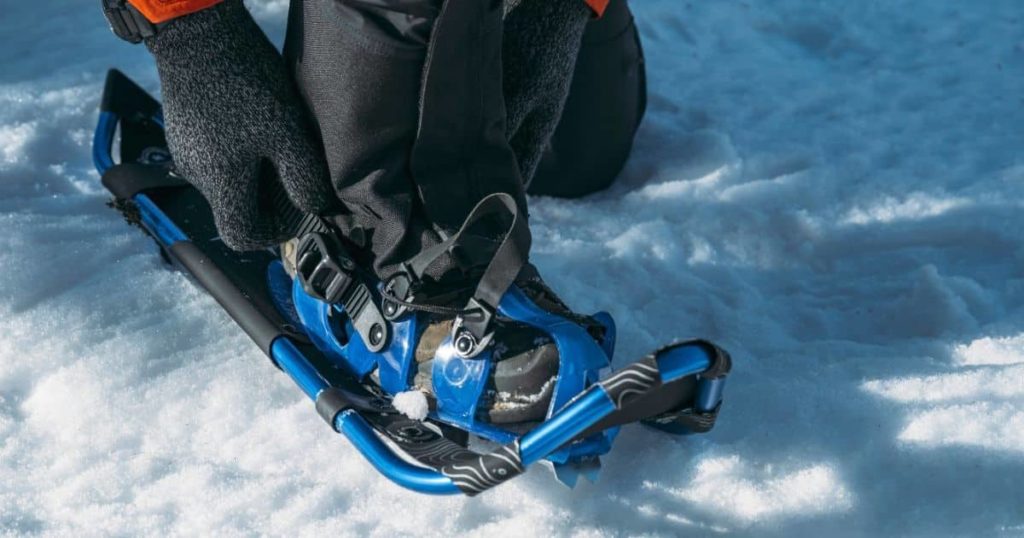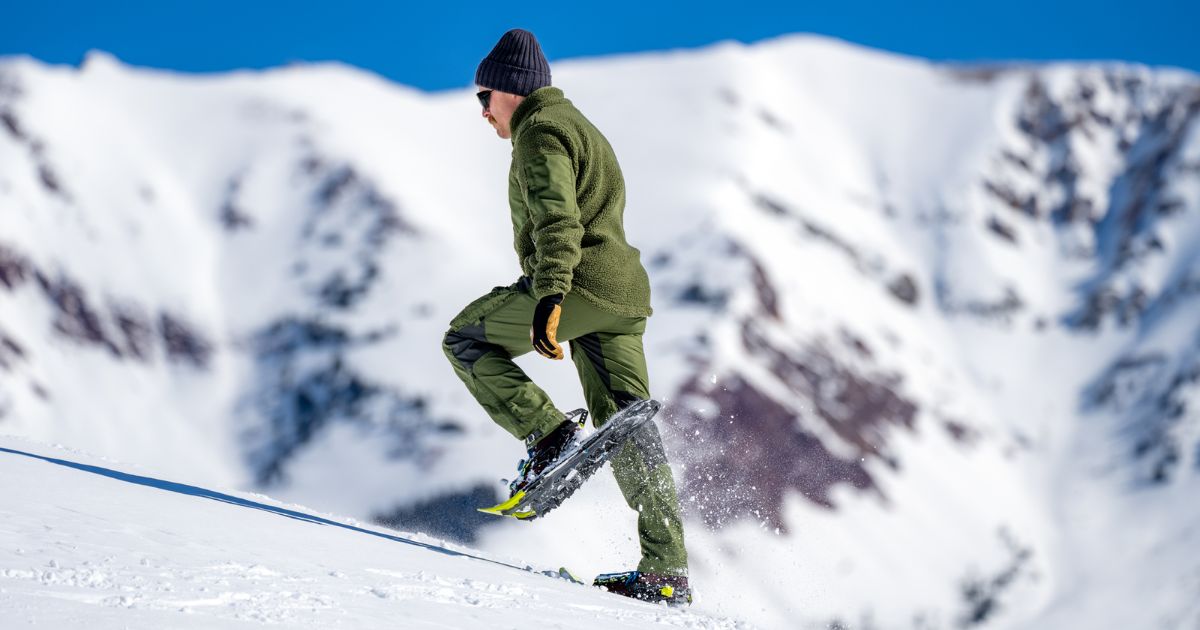Snowshoeing is a fun and exciting winter activity, but wearing the right shoes is important to stay comfortable and safe. When snowshoeing, it’s essential to wear the right shoes to keep your feet warm, dry, and secure. Snowshoeing shoes should be waterproof, insulated, and have good traction. You can wear winter boots, hiking boots, or even snowshoeing-specific shoes.
Winter boots, hiking boots, and snowshoeing-specific shoes are all good options for snowshoeing, depending on your preferences and the type of shoes you choose depends on the weather, the terrain, and your preferences.
What Shoes to Wear with Snowshoes? Overall, choosing the right shoes for snowshoeing is important for staying comfortable and safe while enjoying the winter wonderland. This article will tell you about the different kinds of shoes you can wear with snowshoes. It will also give you tips on choosing the best shoes for you.
Importance of wearing the right shoes for comfort and safety
It’s crucial to wear the right shoes when snowshoeing for comfort and safety. Wearing the wrong shoes can lead to blisters, discomfort, and injuries. Proper snowshoeing shoes should provide warmth, traction, and stability. The importance of wearing the right shoes is increased when snowshoeing, as the terrain can be slippery and uneven.
What Shoes to Wear with Snowshoes? Good snowshoeing shoes can help prevent slips, falls, and twisted ankles. Therefore, investing in the right shoes for snowshoeing is highly recommended to ensure a comfortable and safe experience.
Choosing the Right Shoes for Snowshoeing

Choosing the right shoes for snowshoeing is essential in ensuring a comfortable and safe experience. When snowshoeing, the type of shoe worn can depend on the conditions and the individual’s preferences. Here are some characteristics to look for in snowshoeing shoes:
Waterproof
Look for waterproof materials like Gore-Tex or rubber for your snowshoe shoes. Waterproof shoes will keep your feet dry and warm in wet snow conditions. Ensure your shoes are well-insulated for snowshoeing in cold temperatures.
Choose a pair of shoes with good traction for better grip on slippery surfaces. Look for shoes with ankle support to help prevent ankle injury on uneven terrain. Make sure the waterproof shoes are breathable to prevent moisture build-up inside.
Insulated
Insulation is important for keeping feet warm in cold weather.
Good Traction
The shoes should have a good grip to prevent slips and falls on slippery surfaces.
Ankle Support
Shoes with good ankle support can help prevent injuries such as sprains.
If you plan to go snowshoeing in extreme weather conditions, it’s recommended to wear insulated boots or snowshoeing-specific shoes with removable liners. These types of shoes can help keep your feet warm and dry in very cold weather. Other types of shoes, such as winter boots and hiking boots, can also be worn.
It’s also important to try on shoes with snowshoes before going on a hike to ensure a good fit and prevent blisters or discomfort. Choosing the right shoes for snowshoeing is important in ensuring a comfortable and safe winter activity.
Tips for Trying On Snowshoeing Shoes
What Shoes to Wear with Snowshoes? Consider the terrain you will be snowshoeing on, and find shoes that are designed to handle the terrain. Choose shoes that are waterproof and insulated. Look for shoes that have reinforced toes and heels. Get shoes with good ankle and heel support.
Make sure the laces are tight and secure. Look for snowshoeing shoes that have adjustable bindings for comfort and support. Consider getting shoes with removable liners. Select shoes with good traction and tread. Make sure to try on multiple pairs of shoes for the best fit.
Testing shoes for comfort and avoiding blisters
Fit is the most critical factor when selecting shoes to wear with snowshoes. The shoes should be snug but not too tight, and there should be enough room in the toes for wiggling. The heel should fit securely in the back of the shoe, and the sides should not feel too tight. Additionally, it is essential to try the shoes on with the snowshoes to ensure a good fit.
The material of the shoes is another crucial factor to consider. Shoes made of leather or synthetic materials are the best choices for a snowshoeing adventure. Leather is durable and provides good support, while synthetic materials are not.
Ensuring shoes provide enough ankle support
By taking the time to select the right shoes to wear with snowshoes, you can ensure that you have the best experience possible. Look for a shoe that is lightweight, comfortable, waterproof, and provides adequate ankle support. This will help to keep your feet warm, dry, and supported, and will also help you to stay safe and stable on the snow-covered terrain.
Encouragement to try snowshoeing with the right shoes
The type of shoes you should wear while snowshoeing will depend on the terrain you’re exploring. You will need a pair of boots that are waterproof, insulated, and have good traction if you are going on a trek through deep powder. Make sure that the shoes you choose are up for the challenge of a long winter hike.
You don’t need to wear heavy-duty snowshoes if you’re snowshoeing on a groomed trail. A more lightweight pair of shoes, such as hiking boots or trail running shoes, will do the trick. You’ll still want to make sure they are waterproof, though, and have a good grip on the snow.
Conclusion
In conclusion, What Shoes to Wear with Snowshoes? The most important thing to consider when choosing shoes to wear with snowshoes is comfort and warmth. Keeping your feet warm and dry is essential to your comfort and safety in the snow. Waterproof boots are essential for keeping your feet dry in deep snow. Insulated boots provide extra warmth and protection from the cold.
Heavy duty, high traction boots are also important for providing traction on icy surfaces. In addition, lightweight boots with a good grip are ideal for hikes on packed snow. Finally, make sure your boots have enough room to accommodate the snowshoes. With the right pair of shoes, you can enjoy your time in the snow knowing that you have the right gear to keep your feet safe and comfortable.





